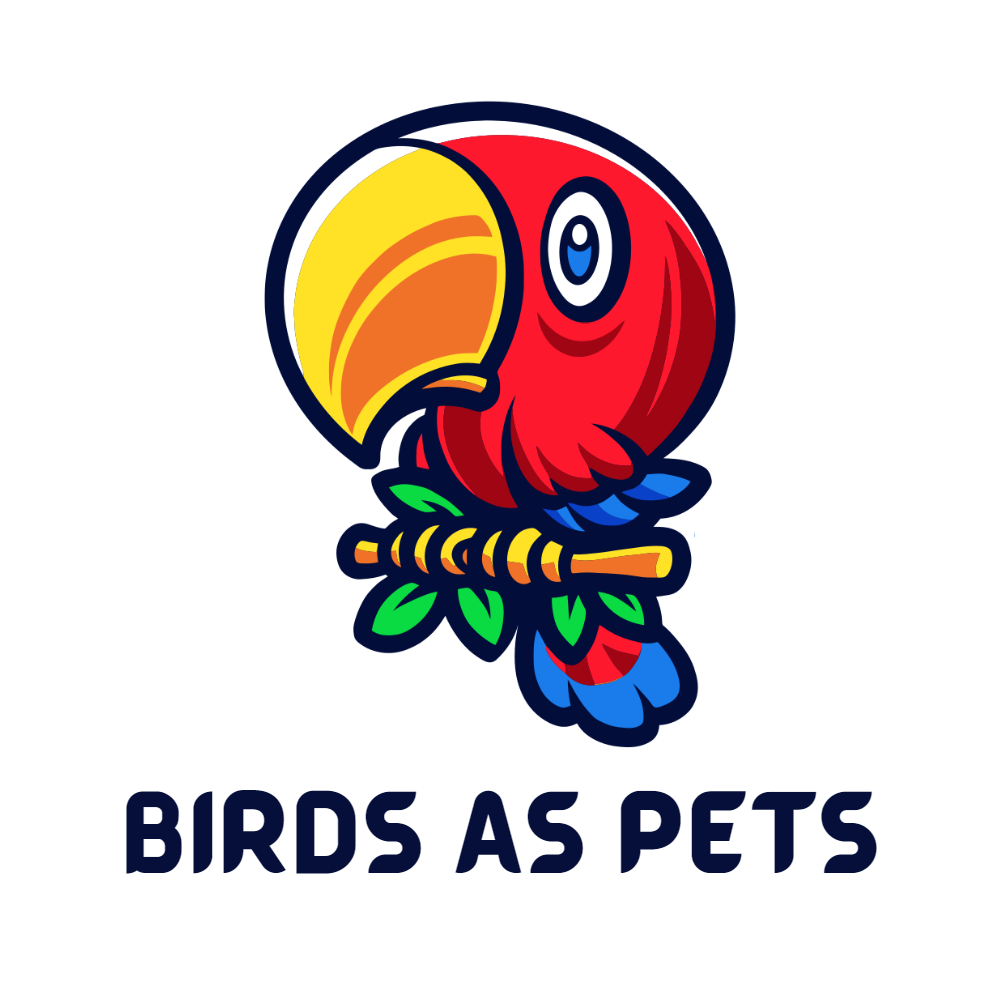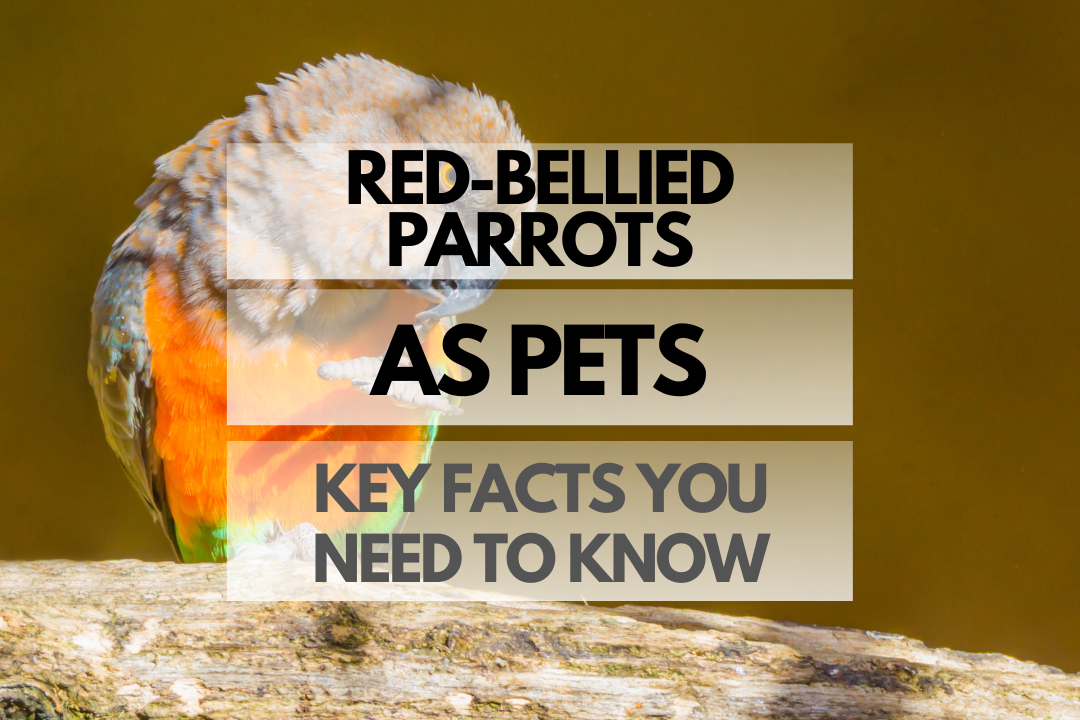If you’re considering adding a Red-bellied Parrot to your family, you’re in for a treat! These charming birds are known for their intelligence, playful nature, and striking appearance. But before you take the plunge, it’s essential to learn about their unique needs and characteristics. In this article, we’ll cover everything you need to know about Red-bellied Parrots as pets.
Quick Reference Table: Red-bellied Parrot Facts
| Fact | Details |
|---|---|
| Scientific Name | Poicephalus rufiventris |
| Average Lifespan | 20-25 years |
| Size | 9-10 inches (23-25 cm) |
| Weight | 110-160 grams |
| Talking Ability | Moderate |
Where Do Wild Red-bellied Parrots Live?
Wild Red-bellied Parrots are native to Africa, predominantly living in the dry savannahs and woodlands across Kenya, Tanzania, and Ethiopia. They are typically found in small flocks and are known for their agile flight and acrobatic displays.
Red-bellied Parrot Lifespan: How Long Do They Live as Pets?
With proper care, Red-bellied Parrots can live for 20-25 years as pets. This lifespan requires a commitment to providing a balanced diet, a clean and safe living environment, mental and physical stimulation, and regular veterinary checkups. Caring for a Red-bellied Parrot is a long-term time commitment, so it’s essential to be prepared for this responsibility.
Are Red-bellied Parrots Good Pets?
Yes, Red-bellied Parrots can make wonderful pets for the right individuals or families. They are intelligent, playful, and affectionate birds that can form strong bonds with their human caregivers. Their moderate talking ability and social nature make them engaging companions, and their manageable size makes them suitable for a variety of living situations.
Are Red-bellied Parrots as Pets Good for Beginners?
Red-bellied Parrots can be suitable for beginners who are willing to invest time and effort into learning about their care and socialization needs. They are generally hardy, adaptable birds that can be easier to care for than larger parrot species. However, it’s essential for first-time bird owners to research and understand their unique requirements to ensure a happy, healthy life for their Red-bellied Parrot.
Are Red-bellied Parrots Easy to Care For?
While no parrot is truly “easy” to care for, Red-bellied Parrots are considered relatively low-maintenance compared to larger or more demanding species. They require a balanced diet, a clean living environment, and regular social interaction, but their care needs are generally manageable for committed and well-prepared owners.
Red-bellied Parrot Pros and Cons
| Pros | Cons |
|---|---|
| Intelligent and playful | Require regular socialization |
| Manageable size | Can be noisy at times |
| Moderate talking ability | Can be territorial or possessive |
| Relatively low-maintenance | Require a long-term time commitment |
Red-bellied Parrot Price and Costs
The price of a Red-bellied Parrot can range from $800 to $1,500, depending on factors such as age, health, and the breeder. In addition to the initial purchase price, there are costs associated with setting up a suitable living space (cage, perches, toys, etc.) and ongoing expenses for food, veterinary care, and supplies.
Where to Buy Red-bellied Parrots
It’s essential to purchase your Red-bellied Parrot from a reputable breeder or rescue organization. Look for breeders who prioritize the health and well-being of their birds and are willing to provide ongoing support and advice. Rescue organizations may also have Red-bellied Parrots available for adoption, giving you the opportunity to provide a loving home to a bird in need.
Caring for Red-bellied Parrots
Proper care for Red-bellied Parrots involves a combination of a balanced diet, a clean and safe living environment, and regular social interaction to ensure their physical and emotional well-being.
Red-bellied Parrot Food
A healthy diet for a Red-bellied Parrot should consist of high-quality pellets, fresh fruits, vegetables, and a limited amount of seeds and nuts. It’s essential to provide a variety of foods to ensure they receive all the necessary nutrients. Avoid feeding your parrot foods that are high in fat, salt, or sugar, as well as toxic foods such as avocados, chocolate, or caffeine.
Health and Common Issues
Red-bellied Parrots are generally hardy birds, but they can be susceptible to certain health issues, such as bacterial infections, feather plucking, and obesity. Regular veterinary checkups can help detect and address health problems early on, and proper care and nutrition can minimize the risk of illness.
Signs of Healthy Red-bellied Parrots
| Healthy | Sick |
|---|---|
| Bright, clear eyes | Discharge or cloudiness in eyes |
| Smooth, well-groomed feathers | Ruffled, plucked, or discolored feathers |
| Active and alert behavior | Lethargy, depression, or aggression |
| Normal droppings | Change in color, consistency, or frequency of droppings |
| Appetite for a variety of foods | Loss of appetite or excessive weight gain/loss |
Red-bellied Parrot Pet Insurance
Investing in pet insurance for your Red-bellied Parrot can provide peace of mind and help cover unexpected veterinary expenses. Policies may cover accidents, illnesses, or both, depending on the plan you choose. It’s essential to research and compare different pet insurance options to find a policy that best suits your needs and budget.
Personality and Behavior
Red-bellied Parrots are known for their playful, intelligent, and affectionate personalities. They love to interact with their human caregivers and can be quite entertaining with their acrobatic antics. These birds are curious and enjoy exploring their environment, so providing plenty of toys and enrichment activities is essential to keep them mentally stimulated and happy.
Are Red-bellied Parrots Social?
Yes, Red-bellied Parrots are social birds that thrive on interaction with their human family members. They can form strong bonds with their caregivers and may even become protective or possessive of them. Regular socialization and handling are crucial for maintaining a happy, well-adjusted Red-bellied Parrot.
Speech and Noise of Red-bellied Parrots
Red-bellied Parrots have a moderate talking ability and can learn to mimic a variety of sounds and words. They may not be as skilled at talking as some larger parrot species, but their vocalizations can still be quite impressive. These birds can be somewhat noisy, especially when they want attention, but their vocalizations are generally considered manageable for most households.
Similar Species to Red-bellied Parrots
Several species are similar to Red-bellied Parrots, both in appearance and temperament. Some of these include:
- Meyer’s Parrot (Poicephalus meyeri)
- Senegal Parrot (Poicephalus senegalus)
- Brown-headed Parrot (Poicephalus cryptoxanthus)
- Jardine’s Parrot (Poicephalus gulielmi)
These related species share many characteristics with Red-bellied Parrots but may have slightly different care requirements, so thorough research is essential if you’re considering one of these birds as a pet.
Can Red-bellied Parrots Live With Other Pets and Birds?
Red-bellied Parrots, like many parrots, can be territorial and may not always get along with other pets or birds. While it’s possible for them to coexist with other animals, it’s essential to monitor interactions closely and ensure each pet has its own space to retreat to if needed. Introductions should be done gradually and under supervision to minimize the risk of conflict.
Are Red-bellied Parrots Legal to Have as Pets?
In most locations, Red-bellied Parrots are legal to keep as pets. However, some cities or states may have specific restrictions or permit requirements for keeping exotic birds. It’s essential to research local laws and regulations before acquiring a Red-bellied Parrot to ensure you’re in compliance.
Additional Resources
- Parrots: A Complete Pet Owner’s Manual by Annette Wolter
- Reddit Parrot Community
- Parrots as Pets Facebook Group
- “Parrot Behaviour and Welfare,” a scientific article by M. Engebretson
FAQ for Red-bellied Parrots as Pets
Do Red-bellied Parrots talk?
Yes, Red-bellied Parrots have a moderate talking ability and can learn to mimic a variety of sounds and words.
Are Red-bellied Parrots suitable for families with young kids?
Red-bellied Parrots can be suitable for families with young kids if the children are taught to handle the bird gently and respectfully. It’s essential to supervise interactions and teach children about responsible pet care.
Can Red-bellied Parrots be trained?
Yes, Red-bellied Parrots are intelligent birds that canbe trained to perform various tricks and behaviors. Positive reinforcement training methods, such as clicker training, work well with these birds.
How do I know what gender Red-bellied Parrots are?
Red-bellied Parrots exhibit sexual dimorphism, meaning males and females have distinct physical differences. Males typically have a more prominent red belly patch, while females have a smaller, paler patch. However, the most accurate way to determine the sex of a Red-bellied Parrot is through DNA testing.
What is the lifespan of a Red-bellied Parrot?
With proper care, Red-bellied Parrots can live for 20 to 30 years. A well-balanced diet, clean living conditions, mental stimulation, and regular veterinary care are essential for their health and longevity.
What is the best diet for Red-bellied Parrots?
A balanced diet for Red-bellied Parrots includes a high-quality pelleted food, fresh vegetables, fruits, and a small amount of nuts and seeds. Avoid feeding high-fat foods, chocolate, avocado, or anything toxic to birds.
How big of a cage do Red-bellied Parrots need?
Red-bellied Parrots need a cage that’s large enough for them to move around comfortably and spread their wings. A minimum cage size of 24 inches wide, 24 inches deep, and 30 inches tall is recommended. Provide a variety of perches and toys for enrichment.

